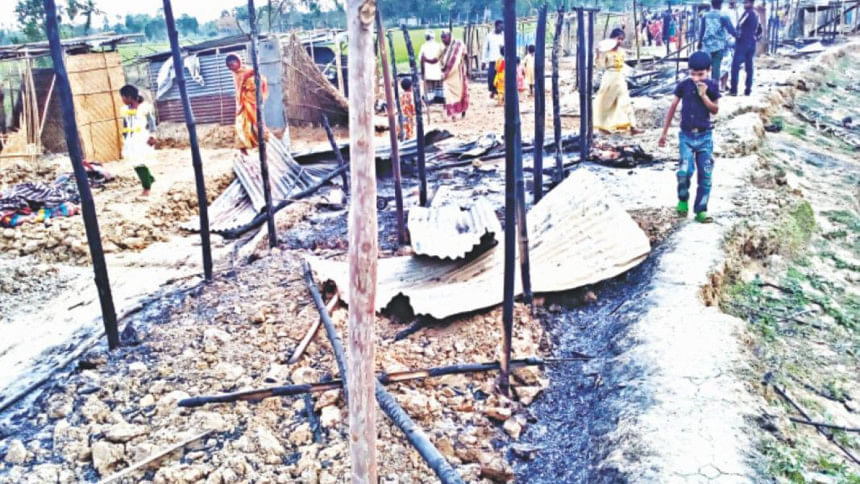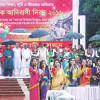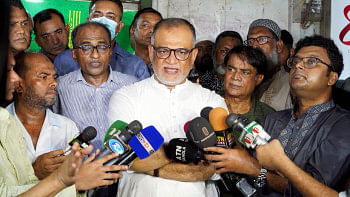Their homes burnt, where will they go?

A report published in this daily on March 27 has once again brought to the fore how the vulnerability of indigenous communities is often used as an instrument of exploitation against them. The report described an incident in which shacks of at least 37 landless families, mostly from the indigenous Pahan community, were burnt down in Naogaon's Dhamurhat Upazila in the early hours of Monday. The arsonists, armed with sharp weapons, sticks and several gallons of flammable liquid, targeted their shacks while they were asleep, and the latter barely came out alive. The manner in which the attack was carried out—not too far from a BGB camp and led by a member of the ruling party—speaks volumes about the risks in which many indigenous communities live, with virtually no protection and hardly any help from the government. It was a heinous crime committed in full knowledge of the inherent vulnerability of the victims.
In the past, we've come across similar news of arson attacks orchestrated to drive out indigenous communities from their land/homes. What makes it worse is that often the attacks are carried out by people either affiliated with the ruling party or assisted by the local administration. The memory of the horror unleased in three villages in Rangamati's Langadu Upazila is still fresh in our mind. The Langadu attackers haven't yet been brought to justice. This is the kind of situation that enhances the indigenous communities' sense of insecurity, and emboldens the perpetrators. The government must not allow this to continue. It should make every effort to ensure that no one can take advantage of this situation and that the indigenous communities are given proper security—and the victims are properly rehabilitated.

 For all latest news, follow The Daily Star's Google News channel.
For all latest news, follow The Daily Star's Google News channel. 








Comments